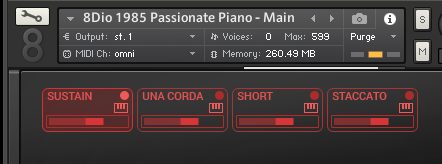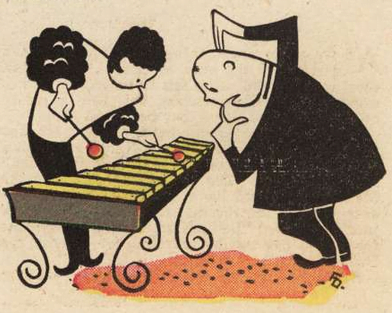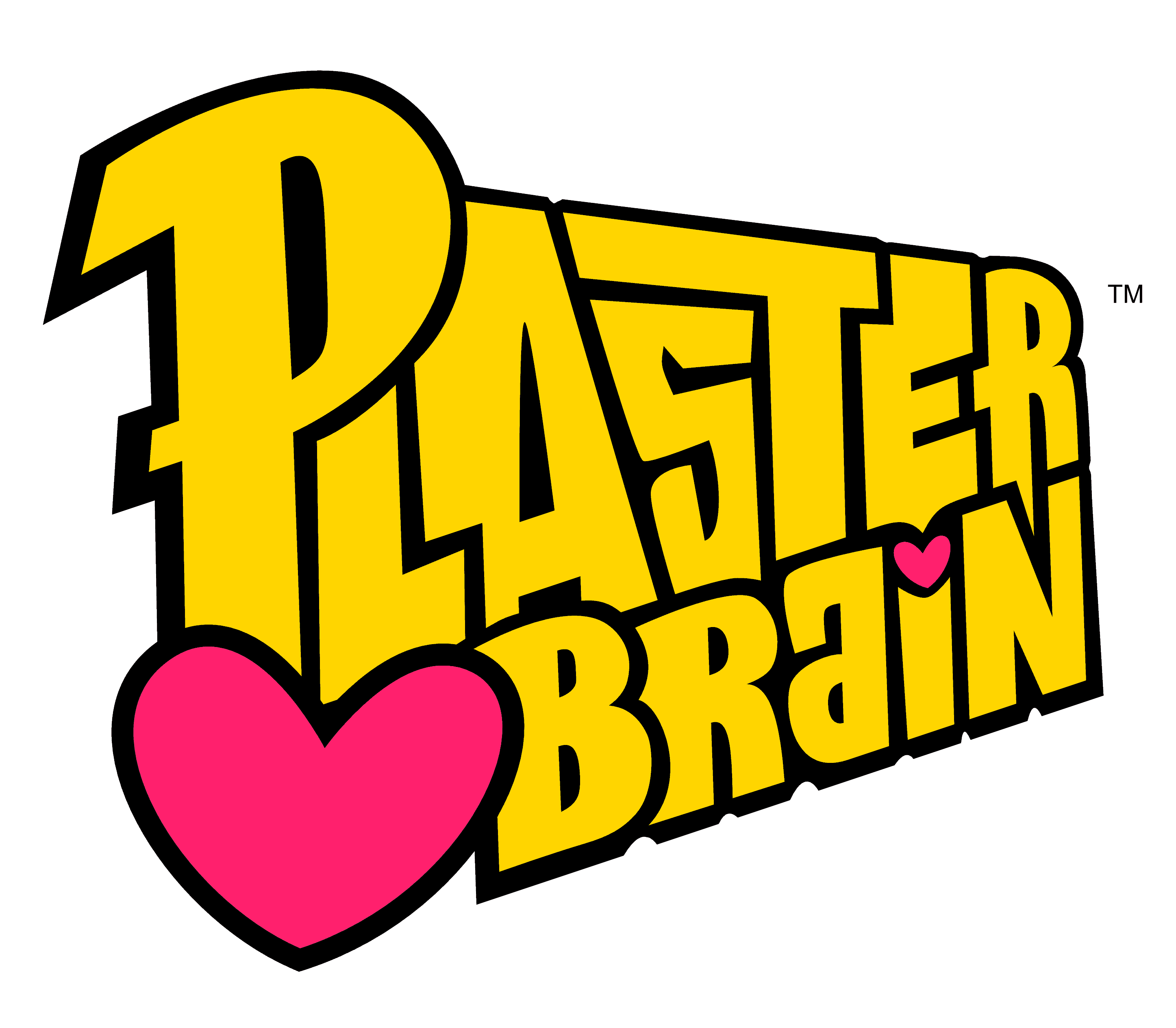List of Virtual Instrument Articulations
♫ Long and thin, legato is like spaghetti. ♫
♫ Short, and chopped in tiny pieces, staccato is like macaroni. ♫— Chant we were forced to recite in AP Music Theory
Instruments have unique features, and very rarely does a master guitarist also become a virtuoso on the trumpet, so the innovators of instrument techniques across history have very seldom stopped to check in with one another. The result is a lot of seemingly unique sets of articulations. Add MIDI programmers and musicologists to the mix, and we are talking at least billions of pastas, and as a Virtual Music Master™, you’ll have to be familiar with quite a few of them.
Fortunately, instruments are more like finches than purveyors of pasta — examine their techniques closely and you’ll notice convergent evolution among them. What I’ve done here is try to make logical groups out of their seemingly unique playing techniques.
This list describes most of the articulations and embellishments you might encounter (as keyswitches, patches, etc.) in virtual sample libraries.
(The computer emoji 💻 indicates a term or sub-definition applies solely to virtual instruments.)
Articulations/Ornaments
- Aleatoric
- A sound that is somewhat toneless and often used as a decorative accent, e.g. in movie trailers. In virtual instruments, the pitch of the sample often does not correspond with the note played on the keyboard.
- Alternate picking 💻
- (Guitars) A term used to describe libraries with both “up” and “down” strokes for each note, i.e. both directions of strumming. In the case of intelligent alternate picking, the library will switch between the two automatically as you play.
- Bartok pizzicato
- (Strings) A kind of pizzicato in which the strings are plucked hard enough to snap back against the fingerboard.
- Body percussion 💻
- (Pianos, guitars, strings) An atonal sound performed by hitting the body of the instrument.
- Bowed sustain 💻
- (Pianos, guitars, lutes, zithers) A basic long note played with a bow or EBow on an instrument that is normally strummed, hammered, or plucked.
- Chop
- (Strings) An off-beat bluegrass rhythmic technique that involves dampening the strings with the left hand and quickly nudging the bow into the strings to produce a crunchy or scratchy percussive sound. Also called a chunk.
- (Lutes) A stopped chord played on the off-beat, most commonly on banjo or mandolin. Also called vamp.
- Dead note
- (Guitars) A note that is muted to the point it has very little discernible pitch, often used for rhythmic emphasis. Also called a ghost note or false note.
- Flutter-tongue
- (Brass) A growling note produced by fluttering the tongue into the instrument, commonly found in libraries geared towards jazz.
- Glissando
- A series of ascending or descending notes that “glide” from one pitch to another. There are two kinds of glissando: the discrete glissando, in which the individual notes of the glissando are easily distinguished (e.g. sliding your hand across piano keys), and the chromatic glissando, in which the individual notes of the glissando are indistinguishable or continuous (e.g. sliding your finger down a violin string). See also: portamento.
- (Strings, woodwinds, brass) A discrete glissando performed up or down a particular scale on these instruments is sometimes called a run.
- (Guitars) The term “glissando” is rarely used with guitar — instead you’ll see the term slide. Slides (which are, of course, chromatic) may be classified as upward, downward, or occasionally bow-wow, which involves sliding up and then back down and is more decorative than musical.
- (Brass) The rip, scoop, fall, doit, and bend are brass slides originating from big band, jazz, and blues. A rip is a discrete rising glissando often used for dramatic effect cinematic scores. In virtual libraries, the starting pitch of the rip is not always easily discernible. The scoop is a short chromatic slide up to a note. The fall and doit are also chromatic glissandos they start on a specific note and either fall or rise to an inexact pitch, kind of like they’re trailing off. A bend (also called lip bend or pitch bend) is a valveless chromatic slide between long notes as a form of musical embellishment on the trumpet. Usually a bend will be descending as it is easier to bend the pitch downwards than upwards.
- Ghost note
- (Brass, guitar, percussion) A note with no discernible pitch.
- (💻) A note used to trigger some articulation utility on an instrument. For example, Impact Soundworks guitars have a “ghost note” key which can be used to trigger portamento at the start or end of a phrase.
- Grace note
- An ornament consisting of a discrete (usually non-chord) note or group of notes that resolves into the target note. Ornamental notes don’t have an exact rhythmic value but are always shorter than the target note. Grace notes come in two flavors: if the emphasis/accent/downbeat is placed on the ornamental note(s), it’s an appoggiatura. If the emphasis is placed on the target note, it’s an acciacatura — though in my experience this is the default grace note behavior and the specific term is not really used. (Thus the instrument lists on this blog use “grace note” to describe what is legally an acciacatura, while “appoggiatura” indicates grace notes with the unusual ornament-emphasis.)
- Gruppetto
- An ornament consisting of the note above, the note, the note below, and then the note again. An inverted gruppetto is instead below-note-above-note. Virtual woodwind instruments with ornaments sometimes feature this articulation, though seldom by name or as its own patch/keyswitch.
- (Woodwinds, brass) Also called a turn.
- Legato
- (Strings, guitars, woodwinds, brass, vocals) A transition between notes that is smooth and connected. For vocals, this is achieved by waiting to take a breath until the end of a phrase. For strings, legato involves keeping the bow on the strings until the end of the phrase, even though it may change direction. For many types of virtual instruments, legato is essential in adding realism. However, recording legato transitions can be time-consuming and costly, which is why free instruments more often emulate the effect using scripts or omit it altogether.
- Marcato
- An accented sustain note, though often the sample is short and non-looping, as it is not meant to be held indefinitely.
- Mordent
- (Guitars, woodwinds) An ornament at the start of a note consisting of a single alteration with the note directly above or below it. A double mordent is two of these alterations in the same direction. Wow, they have everything these days!
- Pizzicato
- (Strings) A note played by plucking the strings of an instrument that is usually played with a bow. Pizzicato is the inverse of the bowed sustain.
- Portamento
- (💻 Strings, guitars, brass, voice) A feature in high-quality virtual instruments indicating a chromatic glissando can be triggered when legato notes are overlapped on the piano roll. The overlapping notes represent the desired starting and ending pitches of the glissando. In most cases, portamento is accomplished with specifically recorded samples (rather than programatically bending the pitch) and thus the feature is limited to a specific range of intervals (e.g. up to one octave).
- (Real instruments) Synonym for chromatic glissando but seldom used.
- (MIDI, synths) Equivalent to glide, which can usually be adjusted by a knob on monophonic sounds.
- Roll
- (Lutes) A repeating arpeggio used as accompaniment in bluegrass music and an essential technique on the banjo.
- Sforzando
- (Strings, brass, woodwinds) Sudden, accented notes that begin very loudly and then quickly drop off. In virtual instruments, this term may also be a catchall for the similar fortepiano and subito forte articulations.
- Slap
- (Guitar, strings) A type of accent produced by thumping the bone of the thumb against the string and quickly releasing, often combined with pops in funk music on bass guitar or funk cello. Less commonly, “slapping” may refer to rhythmically hitting the fret with the palm of your hand to produce a percussive sound on off-beats, such as in bluegrass music.
- Slap tongue
- (Single reeds) A hollow popping sound created by using the tongue to slap the reed against the mouthpiece.
- Slur
- (Strings) Two or more notes played in succession without lifting or changing directions of the bow. Slurs will not be listed as separate articulation patch or preset, but are often included in robust solo libraries for added realism, and can usually be triggered via keyswitch, overlapping notes, and/or CC.
- (Guitars) Equivalent to a hammer-on or pull-off, which is performed by placing a finger on, or removing a finger from, a string that is still vibrating, respectively.
- Spiccato
- (Strings) Short, dry notes produced by “bouncing” the bow off of the string. In practical DTM, they serve as staccatissimos, a shorter and more emphatic articulation to use if your instrument’s staccato patch isn’t dry enough.
- Staccato
- Short, detached notes. Some libraries may include staccatissimo samples, which are even shorter.
- Sustain 💻
- A basic long note consisting of an initial striking sound (the attack), a held-out sound (the sustain), and a lifting or stopping sound triggered when the note ends (the release). The sustain portion may be looped indefinitely. In professional libraries, long sustains may contain audible rebowing, as a real player eventually must change bow directions!
- (Strings) Equivalent to arco, or playing notes with a bow (i.e., not pizzicato). While arco symbols (for up and down bows) are used in sheet music, the term rarely appears in the virtual realm.
- (Guitars) Equivalent to picking. Again, your virtual guitar interface will probably just say “sustain.”

8Dio’s 1985 Passionate Piano calls the default articulation “Sustain.” (Pianos, vibraphones, chimes) The piano used to elongate notes after they have been pressed is the “sustain pedal” (CC 64, sometimes also called “Hold Pedal” in your DAW). Though a term like “piano sustain” may refer to the use of a pedal in traditional music, this is not usually the case in virtual interfaces.
- Tenuto
- Notes held out slightly longer than their written length. Depending on the context/interpretation, it may indicate a kind of accent in sheet music. This articulation shows up often in real music, though in the virtual realm, I’ve only ever seen it appear in brass libraries, where it means “slightly longer than staccato.” (So… maybe like penne instead of macaroni?)
- (Pianos) Equivalent to short.
- Tremolo
- (Strings) A “trembling” sound produced on string instruments by moving the bow back and forth very quickly.
- (Guitars, lutes, zithers) …or by moving the pick back and forth to strum the string(s) repeatedly, as on the mandolin or guzheng laying one note repeatedly.
- (Guitars) …or through the use of a tremolo pedal, which modulates the volume of sustained notes to achieve a similar effect.
- Trill
- (Strings, woodwinds) A sound produced by alternating between two notes rapidly. Instruments with this functionality usually have “half” and “whole” (“HT” and “WT”) trill patches, using minor and major second intervals, respectively. Some libraries may also include trills on larger intervals, like thirds, fourths, tritones, and even fifths (do not attempt).
- (Brass) A shake is a sort of imprecise trill done using air speed instead of the instrument valves. It is used for dramatic effect in big band music and is most commonly performed on the trumpet. Trumpet players may also call it a lip trill or lip slur.
Compounders
 “Compounders” is a term I made up for articulations or playing styles that are not necessarily mutually exclusive with the ones listed above. For example, you could have muted sustains, legato harmonics, or flautando tremolos. When listed alone, they are usually done with sustains.
“Compounders” is a term I made up for articulations or playing styles that are not necessarily mutually exclusive with the ones listed above. For example, you could have muted sustains, legato harmonics, or flautando tremolos. When listed alone, they are usually done with sustains.
- Double-tonguing
- (Brass, woodwinds) An succession of quick and/or accented notes produced by making a “d-g” or “t-k” sound into the instrument.
- Flautando
- (Strings) A form of sul tasto with very little pressure on the bow that is meant to resemble a flute sound. It sounds a lot like false harmonics.
- Harmonic
- (Strings, guitars, pianos) Isolated overtones produced by lightly pressing down on the string. In guitars, the distinction is sometimes made between natural harmonics (played while lightly touching an open string) and artificial ones, which are chromatic.
- Muted/mute
- A dampened note performed by muffling or clamping down on the sound resonators.
- (Strings) The strings are dampened using a rubber clamp attached to the bridge. Equivalent to sordino.
- (Pianos) Traditionally, piano strings may be dampened using the soft pedal (also called the una corda pedal), which shifts the hammers to strike a different part of the felt. Unlike brass instruments or guitars, pianos are not described as “muted” in traditional music, nor are the softened notes called “piano mutes.” The “muted piano” is a term in the internet music sphere that usually means a piano sampled only with this pedal down and/or dampened by placing additional layers of felt (or other fabrics) on top of the strings.
- (Brass) The horn is muzzled using a plastic, metal, or rubber object. Popular brass mutes include Harmon, bucket, plunger, or cup mutes, which each offer a distinct sound character.
- (Guitars) The strings are dampened using the player’s palm, so a muted guitar note is sometimes called a palm mute.
- Power chord
- (Guitars) A two-note chord (perfect fifth or some variation thereof) commonly used for rhythm guitar parts in rock and heavy metal.
- (Strings) Equivalent to the double stop, though this string articulation is much harder to find in DTM.
- Stopped
- (Strings) A plucked note that is forcefully ended by clamping down on the string to cut off the sound early.
- (French horn) A stopped horn is one that is muted by placing a hand or stopping mute inside the bell to reduce airflow, producing a buzzier timbre.
- Sul ponticello
- (Strings) Lit. “on the bridge,” meaning the bow is played on or very close to the bridge, resulting in a harsh, scratchy sound.
- Sul tasto
- Lit. “on the fingerboard,” meaning the bow is played on the fingerboard, resulting in a softer, more muted sound.

